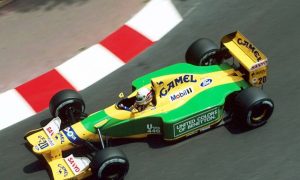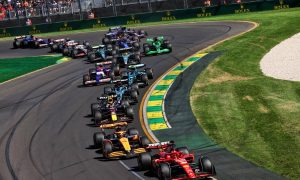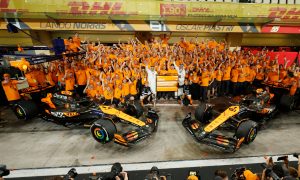You can run but you can’t hide: Eric Silbermann tracks down interesting people and forces them to have breakfast with him.

There’s the guys and girls at Honda, there’s Romain Grosjean’s engineer and a couple of other folk, but apart from that, Japanese people are thin on the ground in the F1 paddock. However, one son of the Rising Sun has been a constant feature of the sport off and on for around four decades. Now a journalist, Tetsuo Tsugawa is an instantly recognisable figure, with his pony tail and bandana, but not many people realise he did his time as a Formula 1 mechanic too.
It seems you’ve always been here, but when did you actually start working in F1?
1978 with John Surtees, Team Surtees. I was a big fan of Formula 1 since I was a little boy and in 1960 or so, the first Honda F1 car came out. We had no information about it, just some stories in the newspapers because there weren’t even any special motor sport magazines in Japan, just normal papers. I remember seeing what became a very famous picture of Mr. Honda, crouching down next to a gold coloured F1 car. I’d never seen an F1 car and my jaw dropped and my interest grew very strong.
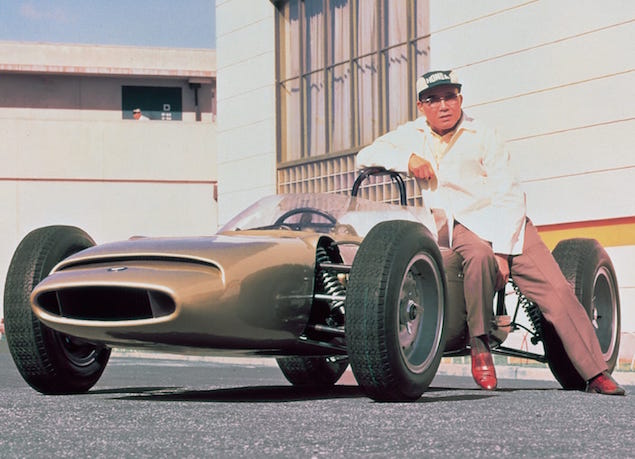
©Honda
My father said that even when I was only two years old I was already playing with toy cars. When I was in primary school, there was a small vegetable shop near my home and very early morning they would go to the market and I would go with them on a three wheeler truck. At half past three or four o’clock in the morning I’d be waiting near the shop and I would ride in the truck. Coming back from the market, I’d go home, my parents were still asleep and that was my start for getting an attraction to something with an engine.
Surtees, Formula 1, Honda, Honda with Surtees! Truth is I didn’t know much else about Formula 1 before I came to England, just what I could read, because it was before the days of TV coverage. After I graduated from University with a degree in Mechanical Engineering, primarily having studied about power trains and gearbox matters, I wrote to all the Japanese racing car constructors, supplying national formulas like 2 litre sports car series, which was very popular at the time. We are talking about the early 70s. I went to work in a place where I did drawings but I really wanted to touch the cars, get my hands on the cars. Truth is I wanted to drive the cars, but that was impossible!
So in 1974 I went to Fuji Speedway to watch Formula 1 testing, I think five teams came: Fittipaldi was there, Ronnie Peterson was there and other famous names. There was a group of us went and it made me want to be involved in F1 even more. Then, two years later in ’76, I went to the Japanese Grand Prix at Fuji, the famous one, because of the duel between [Niki] Lauda and [James] Hunt. I have seen the film, “Rush” but I don’t like it because I was there! Truth is, after the finish, Teddy Mayer and Hunt talking, “you are third” said Mayer and just behind them, I was there, but I’m not there in the film.
How did that lead to you actually working in F1 though?
That race really flicked my switch to “On” and five months later I was in London. I came with no job and one suitcase. Even when I arrived at Heathrow Airport, I hadn’t even booked myself a hotel and I couldn’t really speak English. I jumped into a bus going to London and I didn’t know where to go. But I’d heard of the world famous Victoria Station so I went there and found an information centre. They found me a hotel and I spent two days there but it was too expensive. So I moved to a very rough area with cheap hotels and stayed there about five nights, before finding myself a very cheap apartment. I had brought all my savings and sold all my possessions in Japan, my car and so on. For the next eight months I sent my cv maybe a million times to many many teams in all formulas, because I never believed I could get straight into Formula 1. I even sent letters to companies if I didn’t know what they did! In those days, Autosport magazine used to have pages of jobs and I would send my cv to all of them, top to bottom. Finally, I ended up going to about five interviews including one with the Shadow Formula 1 team, but I didn’t get the job and I thought about going back home.
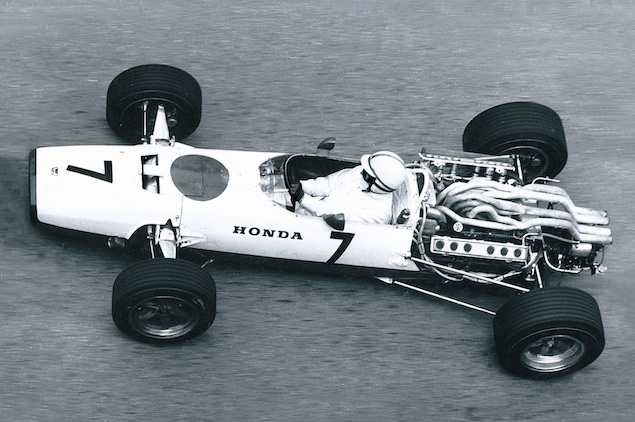
©WRi2
And then came the Surtees job?
But finally John Surtees took me on, because of his Honda connection. He had opened a Honda dealership in Edenbridge and a lot of the instructions for the cars were still in Japanese. So I translated it all and that is how I started. My first job was as a fabricator for the Surtees team in 1978 – the drivers were Vittorio Brambilla and Rupert Keegan: two massive shunters! So, they needed a fabricator for the race, as it was a full time job with those two. The Surtees team needed a lot of welding done at the circuits! I did the whole championship after the European part of the season.
What are the stand-out memories from those days?
The worst memory was Monza ’78, the big shunt, Brambilla crashed into Ronnie Peterson. (It was a huge multiple car crash and Brambilla hitting Peterson was just the final part of a chain reaction). That was my first year in Formula 1 and that race day changed my whole feeling about Formula 1. That day, Ronnie Peterson came to our canopy, because his former team manager, Peter Briggs, was our team manager. He and Ronnie were friendly so Ronnie came to chat to us and that was the last time I saw him alive. Ronnie’s mechanic had only just joined him, after having been with our team and that guy was my room-mate in the bed and breakfast where I lived in Edenbridge. That race changed me completely. Formula 1 became more serious. I knew then that if I carried on I would have to regard it as something that was not fun, but really serious. I saw a lot of drivers die after that, including in Canada, Riccardo Paletti who died in front of us in a fire. Paletti’s mother was there on the pit wall and we all grabbed her as she tried to go to her boy. It was a terrible, terrible experience for me. I played around, had a lot of friends but always inside I was different. I changed to a lot of teams. I was at Surtees, then Ensign, which became Theodore and then I went to Toleman, Carl Haas’ team and back to Benetton. That is the quick version but the reason for all the change is that most teams disappeared (laughs) I was only in small teams and they tended to fold. But I enjoyed it a lot.

©CahierArchive
Most of us old boys remember you best from your days at Benetton, how long were you there?
Not long, from 1985 to 1990, only five years, but before that Toleman from ’83 which was the same team of course. At Benetton I was second mechanic. When I went back to Benetton after Haas, I had trouble in my private life as my first wife died and I had to carry her back to Japan and to her parents. She had cancer and died and Benetton called me: “If you want to come back, the position is there.” So, I came back. I was very touched by that and that’s why I felt I didn’t need a more important job, and that second mechanic was good enough. I told them second or third mechanic or floater, I don't care. That is Japanese style. There is a Japanese code called Giri (a burden of obligation). It means that if somebody gives you something very generous then you have to give back in the same way. It must never be just one way. When my wife was dying the team helped me a lot, helped us get back to Japan. I was so grateful and going back to work for Benetton was my gift back to them. I didn’t need too much money or a top position, just work. Benetton was my favourite place.




